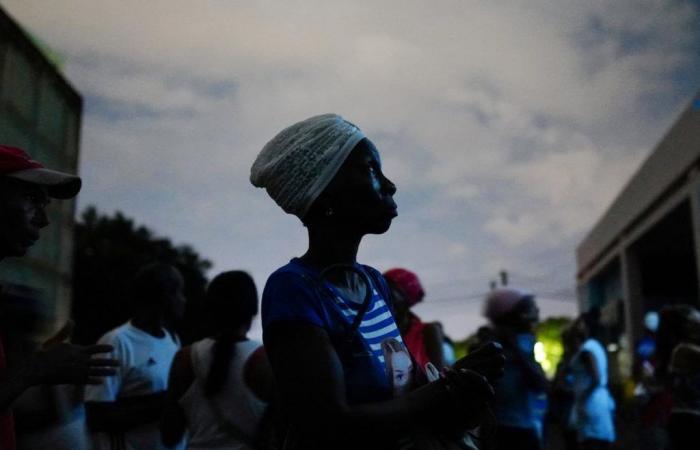Dozens of young people line up near the Santa Catalina causeway in Havana. Activities have been announced for the opening of summer this June 8 at La Finca de los Monos. In the videos that several users have shared on social networks, an uproar is beginning to be noticed. People run from one place to another. They scream. Several have come to blows. A group of women pull their hair. What promised to be a Saturday of recreation has ended in an orchestra of hits. Some young people can be seen walking with machete and knives. There are injured people, lying on the ground. At some point the police officers arrive. People talk about several deaths and injuries. The government denies responsibility and denies the fact that anyone died. The tumultuous fight at the Finca de los Monos, which the Cuban state press even talked about when the norm is to remain silent in the face of this type of events, once again sparked the debate over the violence that, according to many, is being experienced lately on the streets of Cuba.
More and more frequently, the independent press publishes headlines about armed robberies, murders, street fights. About a young man from the municipality of Campechuela, in the east of the country, whose destroyed body his own family and friends have found due to the “ineptitude” of the police, according to what they said on Facebook. The two young people who planned the murder of a man in Camagüey to steal his electric tricycle. The life sentence of a Cuban citizen for murdering a farmer to steal his cattle. The balance of one dead and several injured during a concert by singer Jerry La Bandera. And others.
In the midst of the economic crisis that Cuba is going through, the worst in its history, according to Cuban economist Carmelo Mesa-Lago in a recent interview with EL PAÍS, the perception of violence has also increased. “It is very difficult to access statistics, to have a statistical reference to say that crime has increased. Now, it is undeniable that not only the increase in crime is perceived, but also the nature of violence,” says defense lawyer Nelson González, with more than 30 years working in the Cuban judicial system. “Some will say that there have always been robberies with violence, murders, homicides, or any other manifestation of violent crime, but today we see these expressions more. The country has a deterioration of everything. “A deterioration of the value system, an economic crisis that impacts all areas of life.”
Among the achievements that the Cuban Revolution always boasted about was that of social security. On one occasion, at an event for the 45th anniversary of the Ministry of the Interior (MININT), Fidel Castro assured that “Cuba is the safest country in the world”, something that he repeated many times in many of his speeches. Several rankings World Cups continue to place Cuba among the safest countries. The Numbeo platform ensures that the island has the lowest crime rate in the region, along with Panama and Canada. At the beginning of the year, Spanish political scientist Arantxa Tirado expressed in X that Cuba was “the safest country in the entire Western Hemisphere,” after denying ruler Nayib Bukele, who wanted to reserve that place for El Salvador. The political scientist’s comment generated reactions from Cuban users, who once again fueled the debate about the feeling of insecurity that, perhaps for the first time, is being experienced collectively in the country.
The results of a digital survey from the Cubadata platform, which measured citizen insecurity on the island, show that 61% of those surveyed claimed to have been a victim of some type of violence or crime in Cuba in 2022. Of that group, only 14.6% said they had reported the incident to the country’s authorities.
Even so, the position of the Cuban Government has been not only to silence, but to deny that there really is an increase in violence. A few days ago, President Miguel Díaz-Canel said that in Cuba “there are no missing people or murders.” Last March, an official from the Prosecutor’s Office of the Republic assured that there is no increase in crime, but rather that the gradual opening of the Internet and the access of more Cubans to social networks increases “the visibility” of this type of events. that were previously left in the shadows, and are “spaces where events are also distorted.”
In the midst of this situation, not infrequently the government comes out publicly to deny that there is an increase in violence in the country, and blames the independent press or the supposed campaigns orchestrated by opponents of the Revolution for spreading this type of news. Beatriz de la Peña La O, head of the Investigation Department of the Directorate of Criminal Proceedings, said in a state program that only 9% of the crimes committed in Cuba are violent. She further specified that only 1% are homicides and 3% are murders, of which 89% are related to personal problems and 11% are committed for profit. These are figures impossible to verify due to the lack of transparency with which the Cuban Government manages and publishes its data. “In numbers, in quantity, in process, there are no greater number of murders,” said the official, who also relates internet access to the perception of the increase in violence.
In the absence of state spaces to make these types of crimes visible, and an often inefficient response from the National Revolutionary Police (PNR) or the Ministry of the Interior, Cubans have created groups on social networks to denounce the crimes. Independently of the State, gender observatories in Cuba have also taken charge of keeping a record of victims of feminicidal violence, something that the authorities usually hide, but that has raised alarms in recent times. In 2023, 89 femicides were recorded in Cuba, almost triple the number that could be recorded in each of the previous two years. So far in 2024, verified victims of feminicide total 23, according to the Alas Tensas Gender Observatory (OGAT) and the Yo Sí te Creo Femicide Observatory in Cuba (YSTCC). Even in the midst of this panorama, which exceeds the femicides figures of countries with a larger population like Spain (22 women in 2023, according to the Ministry of Equality), the Cuban Government not only does not approve the much acclaimed Comprehensive Law against Violence of gender by the activists, or hides the numbers of women killed by partners or ex-partners, but Díaz-Canel has insisted that femicides are “a media construction completely foreign to Cuban reality.”
Follow all the international information on Facebook and xor in our weekly newsletter.






